Full confession, I feel terrible for applying for the Capital One Venture X. Greg the Frequent Miler has a brutal history with Capital One (although this evidently doesn’t carry-over to Mrs. Miler). First, they wouldn’t approve him for a card, no matter how many C1 articles he wrote. Then, after finally and ever so briefly giving him a taste of the Capital One universe, they shut him down and cashed him out at only .5 cents per point…which is like buying dollar bills for fifty cents. Needless to say, this aggression could not stand. And so I stood..with Greg.
But then, the Capital One Venture X 100K + $200 bonus (that I’ve been eyeing from across the picket line) was slated to end on March 14th. It looked pretty good from where I was standing and so I took the “I stand with Greg” wallpaper off of my profile photo and sheepishly applied for the card. I got approved instantly, felt bad for Greg, and then started lustily imagining the heights that my new Venture X would take me to.
But it left me with a question…what do I do with my Sapphire Reserve?
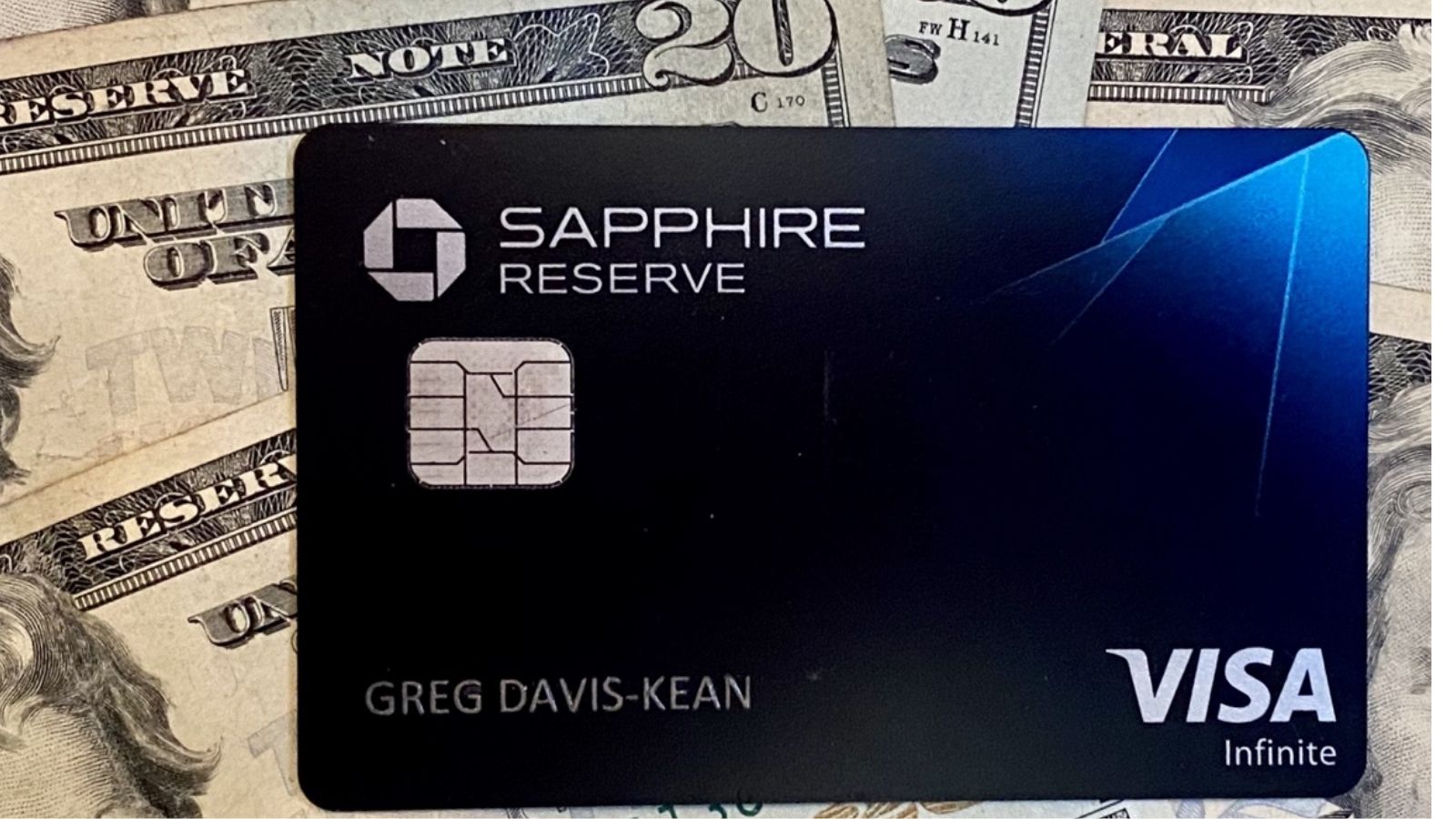
Details of Cards Discussed
| Card Offer and Details |
|---|
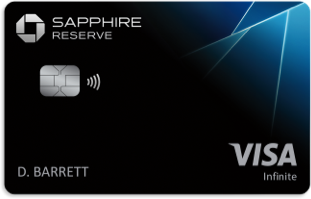 ⓘ $1585 1st Yr Value Estimate$300 travel credit valued at $285, $300 StubHub credit ($150 Jan-Jun and again Jul-Dec) valued at $75, $500 Chase The Edit credit ($250 Jan-Jun and again Jul-Dec) valued at $125, $300 Chase Dining credit for dining at Sapphire Reserve Tables restaurants ($150 Jan-Jun and again Jul-Dec) valued at $75, $500 Chase Travel credit valued at $400 Click to learn about first year value estimates 100K Points + $500 Chase Travel℠ promo credit ⓘAffiliateThis is an affiliate offer. Frequent Miler may earn a commission if you are approved for this offer 100K + promo credit good for up to $500 towards a single Chase Travel℠ booking after $5K spend in 3 months. $795 Annual Fee Note that promotional travel credit is one-time use and if it is applied to a transaction of less than $500, the remaining value will be forfeited. FM Mini Review: Good all-around card for frequent traveler. Best when paired with no annual fee Chase Freedom Flex, Freedom Unlimited & Chase Ink Cash cards. Click here for our complete card review Earning rate: 8X Chase Travel℠ ✦ 4X flights and hotels booked direct ✦ 3X Dining ✦ 5X Lyft (through September 2027) Card Info: Visa Infinite issued by Chase. This card has no foreign currency conversion fees. Big spend bonus: After spending $75,000 each calendar year, get the following benefits: IHG One Rewards Diamond Elite Status ✦ Southwest Airlines A-List Status ✦ $500 Southwest Airlines credit when booked through Chase Travel ✦ $250 credit to The Shops at Chase Noteworthy perks: $300 Annual Travel Credit ✦ Transfer points to airline & hotel partners ✦ Up to $500 The Edit credit annually ($250 January to June and again July to December) ✦ Up to $300 Dining credit through Sapphire Reserve Exclusive Tables ($150 January to June and again July to December) ✦ Complimentary AppleTV+ and Apple Music through 6/22/27 ✦ Up to $300 in StubHub credits ($150 January to June and again July to December) ✦ Points worth up to 2 cents each towards qulalified bookings through Chase Travel ✦ Transfer points to airline & hotel partners ✦ Primary auto rental coverage ✦ Priority Pass Select lounge access ✦ Access Sapphire Lounges for yourself and 2 guests for free ✦ Access select Air Canada Maple Leaf lounges when flying Star Alliance ✦ Up to $120 Global Entry or TSA PreCheck® or NEXUS Application Fee Statement Credit ✦ Free DoorDash DashPass through 2027 ✦ Two promos of $10 off each month on non-restaurant orders from DoorDash ✦ $5 off restaurant order each month from DoorDash ✦ $10 monthly Lyft creditPrimary auto rental coverage ✦ Priority Pass Select lounge access ✦ Access Sapphire Lounges for yourself and 2 guests for free ✦ Access select Air Canada Maple Leaf lounges when flying Star Alliance ✦ Up to $120 Global Entry or TSA PreCheck® or NEXUS Application Fee Statement Credit ✦ Free DoorDash DashPass through 2027 ✦ Two promos of $10 off each month on non-restaurant orders from DoorDash ✦ $5 off restaurant order each month from DoorDash ✦ $10 monthly Lyft credit See also: Chase Ultimate Rewards Complete Guide |
| Card Offer and Details |
|---|
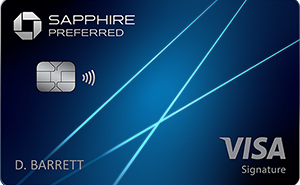 ⓘ $985 1st Yr Value Estimate$50 prepaid hotel credit valued at $35 Click to learn about first year value estimates 75K Points ⓘAffiliateThis is an affiliate offer. Frequent Miler may earn a commission if you are approved for this offer Earn 75,000 bonus points after spending $5,000 within the first three months from account opening.$95 Annual Fee Recent better offer: Expired 5/14/25: 100K after $5K spend FM Mini Review: Great welcome offer. Unlocks ability to transfer points to hotel & airline partners. Solid option to pair with no annual fee Ultimate Rewards cards such as the Freedom cards, Ink Business Cash, and Ink Business Unlimited. Earning rate: 5X Travel booked through Chase Travel℠ (2X all other travel) ✦ 5X Lyft through 9/30/27 ✦3X Dining ✦ 3X Select streaming services ✦ 3X Online grocery ✦ 10% annual point bonus Card Info: Visa Signature issued by Chase. This card has no foreign currency conversion fees. Noteworthy perks: Primary auto rental collision damage waiver ✦ Free DoorDash DashPass (min. one year, must activate by 12/31/27)✦ $10 off each month on one non-restaurant orders from DoorDash ✦ Transfer points to airline & hotel partners ✦ $50 back for hotel stays booked through Chase per cardmember year in the form of a statement credit ✦ Each account anniversary earn bonus points equal to 10% of total purchases made the previous year. |
| Card Offer and Details |
|---|
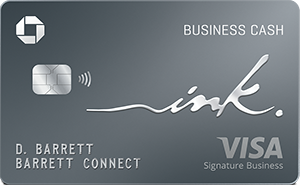 ⓘ $1029 1st Yr Value EstimateClick to learn about first year value estimates Up to $750 cash back* ⓘAffiliateThis is an affiliate offer. Frequent Miler may earn a commission if you are approved for this offer $350 (*awarded as 35,000 points) after $3K spend in 3 months and an additional $400 (*awarded as 40,000 points) after $6K spend in 6 months. No Annual Fee Recent better offer: 90K after $6K spend in 6 monthd (expired 1/17/24 FM Mini Review: This one should be in everyone's wallet. Incredible welcome offer for a no-annual-fee card. Great card for 5X categories. Excellent companion card to Sapphire Reserve, Sapphire Preferred, or Ink Business Preferred. Click here for our complete card review Earning rate: 5X office supplies and cellular/landline/cable (on up to $25,000 in total purchases in 5x categories annually) ✦ 2X on the first $25K in combined purchases at gas stations and restaurants each cardmember year ✦ 5x Lyft through September 2027 Card Info: Visa Signature Business issued by Chase. This card imposes foreign transaction fees. Noteworthy perks: ✦ Complimentary Instacart+ for 3 months (must activate by 12/31/27) ✦ $20 monthly Instacart credit See also: Chase Ultimate Rewards Complete Guide |
| Card Offer and Details |
|---|
 ⓘ $950 1st Yr Value Estimate$300 travel credit valued at $265 Click to learn about first year value estimates 75K Miles ⓘFriend-ReferralThis is a friend-referral offer. A member of the Frequent Miler community may earn a referral bonus if you are approved for this offer 75k miles after $4k spend within first 3 months. $395 Annual Fee Information about this card has been collected independently by Frequent Miler. The issuer did not provide the details, nor is it responsible for their accuracy. Recent better offer: Expired 3/14/22: 100K after $10K spend in 6 months + $200 credit for vacation rental spend in first year FM Mini Review: This card offers annual rebates that easily mitigate the fee for those who travel often. Authorized users are free and also get access to perks like Priority Pass, Capital One Lounges and more. The card earns 2 "miles" per dollar on most purchases just like the Capital One Venture Rewards card, which are worth exactly 1 cent each toward travel. This makes the return on most spend similar to a 2% cash back card (though in this case you must redeem your miles to offset travel in order to get 1 cent per mile). One huge advantage over cash back: Capital One allows transfering their "miles" to airline miles & hotel points. Click here for our complete card review Earning rate: 10X miles on hotels and rental cars booked via Capital One Travel ✦ 5x miles on flights and vacation rentals booked via Capital One travel. ✦ 2X miles everywhere else. Card Info: Visa Infinite issued by CapOne. This card has no foreign currency conversion fees. Noteworthy perks: $300 annual credit for bookings made through Capital One Travel ✦ 10,000 bonus miles each year starting at first anniversary ✦ Up to $120 application fee credit for Global Entry or TSA PreCheck® ✦ Capital One Lounge access ✦ Priority Pass membership (lounges only) after enrollment ✦ Cell phone insurance ✦ Trip insurance ✦ Primary CDW coverage ✦ Redeem miles for travel at value of 1 cent per mile ✦ Convert "miles" to airline miles & hotel points |
Why the Reserve should be 86’d
When the Venture X appeared last year, it seemed to be taking direct aim at the Sapphire Reserve:
- Annual Fee: Venture X $395 vs. Reserve $550
- Annual Travel Credit: Venture X $300 (only via C1 Portal) vs. Reserve $300
- Shared Transfer Partners: Air Canada, Air France/KLM Flying Blue, British Airways, Emirates, Singapore
- Primary Car Rental Insurance: Both
- 10x on hotels and cars booked through travel portal: Both
- 5x on flights booked through travel portal: Both
- Priority Pass Including Restaurants: Both
- Insurance and Priority Pass Benefits for Free Authorized Users: Venture X only
- 10,000 Point Anniversary Bonus: Venture X only
For me, the primary car insurance and Priority Pass membership of the Sapphire Reserve and the Sapphire Preferred is something that has kept me with the cards for years. I rent cars a lot and have had to make three claims through Chase already (mostly not my fault). Chase has paid out each one without much hassle, outside of the considerable headache of assembling the small library’s worth of documents. Not having to worry about accidents going on my own insurance when renting is a HUGE benefit for me. But now the Venture X has this as well.
The Priority Pass benefit is great also. I have several well-located restaurant options in my local airport and use them frequently when traveling. The AMEX PP Memberships specifically exclude them. But…Venture X doesn’t.
Given the Venture X’s lower annual fee, which for me is completely covered by the combination of the $300 credit and the 10,000 point anniversary bonus, it seems like the most salient features of the Reserve are redundant, especially when factoring in the overlapping bonus categories of the Reserve and the fee-free Chase Freedom Unlimited and Freedom Flex cards.
No one wants to leave the Ultimate Rewards transferable universe completely and so it’s necessary to have either the Ink Business Preferred, Sapphire Preferred or Sapphire Reserve in order to keep the path to transferring points to partners open. The prevailing opinion is to product change the Reserve down to the Preferred for the lower annual fee ($95) and to maintain a seat at the Chase Transfer table.
But there’s only one thing that keeps me keepin’ my Reserve: .25 cents per point.
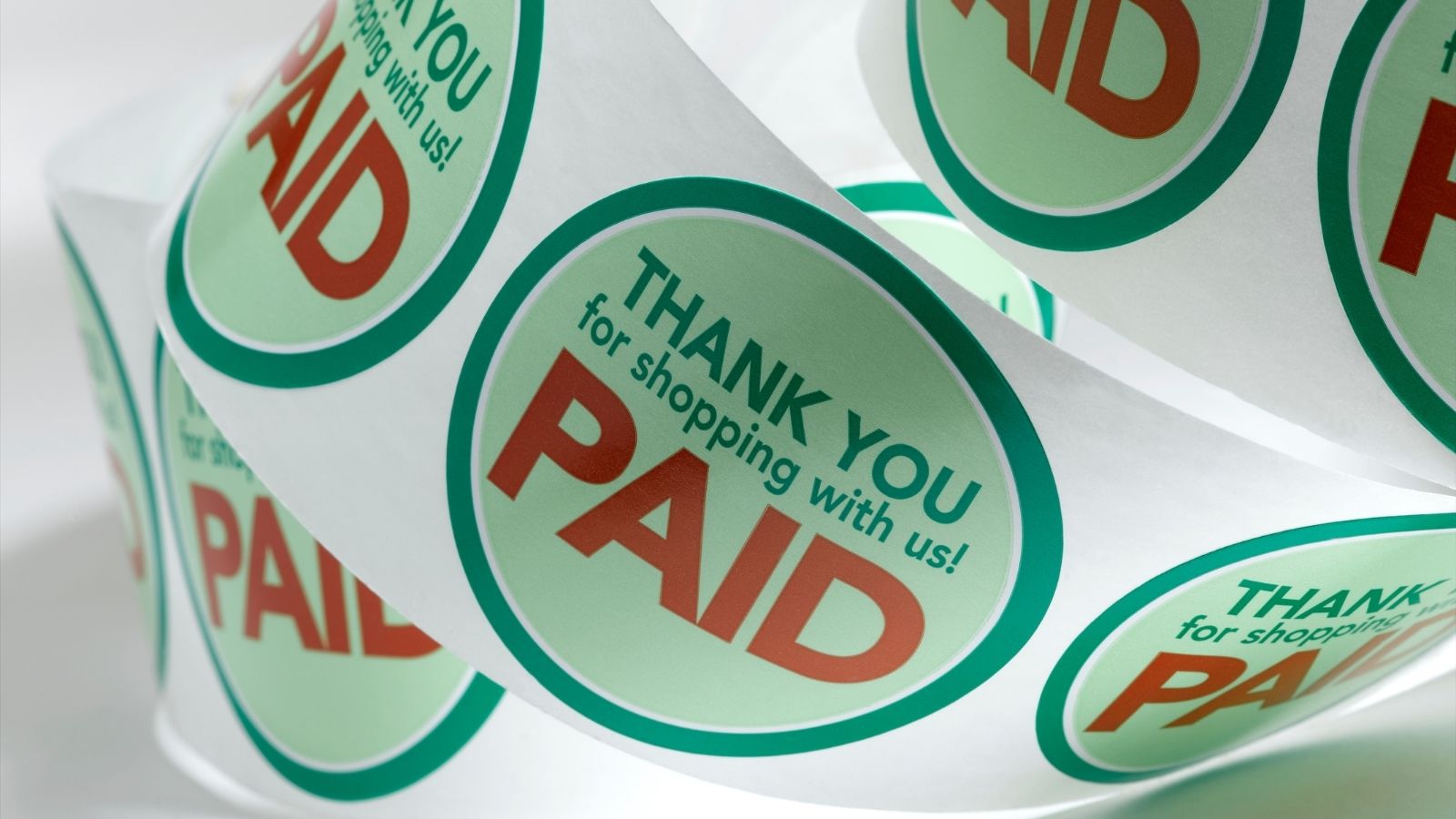
Why the Reserve is worth $250
Before I go through my reasoning, let me say that this is NOT FOR EVERYONE. If your UR stream is more of a slow trickle and/or if you find yourself transferring all of your Ultimate Rewards every year to partners, downgrading is probably the right move.
But I’ve got a few factors that make me a contrarian:
- I max out $25,000 of office spend at 5x on four Chase Ink Cash cards every year (soon to be 5), generating 500,000 Ultimate Rewards annually without considering other spending or bonuses.
- Because of my work, I eat out a lot (or, at least, that’s the story I tell myself).
- I sometimes stay at independent hotels
- I like to pay the annual fee in points
Using the Chase Sapphire Reserve card’s Pay Yourself Back feature, you can redeem points for purchases on dining, charities, travel purchased through Chase Travel℠ and your annual membership with at 1.5 cents per point. The Preferred’s categories are slightly different as they currently don’t allow PYB for dining or the annual fee and the points are only worth 1.25 cents. Effectively, $100 in PYB redemptions costs 8,000 points for the Preferred, but only 6,667 points for the Reserve, meaning on shared categories, points on the Reserve are worth 20% more than the Preferred.
Now, I know that I’ve instantly gone down a peg in some folk’s eyes for even thinking of redeeming Ultimate Rewards at 1.5 cents each. But remember, I generate more points than I can transfer to partners annually…and will continue to do so every year until the Ink bonuses change.
There’s really no need for me to bank points. They won’t get any more valuable and I know I’ll be making more soon, so my goal is to maximize the short-term value as much as possible.
I consider the Reserve to have a “real” annual fee of $250. That’s because I value the $300 travel credit at face value since it’s flexible and easily redeemed on things that I would be spending cash on already. So taking that $300 out of the $550 annual fee leaves me with $250 out of pocket. The Sapphire Preferred’s annual fee is $95, so the difference between the two is really $155. Since I pay the fee in points, that works out to 10,333 points difference at 1.5 cpp ($155/.015).
- Note that the Chase Sapphire Preferred does have an annual $50 hotel credit that must be used through Chase Travel, negating the ability to receive loyalty benefits or credit. Since it almost invariably requires more spend than $50 and must be used through Chase Travel, I find the value somewhat subjective, but not face value. If you were to value it at the full $50, it would make the annual fee difference between the Preferred and the Reserve $205 (or 13,666 points), not $155. If you value it less than $50, it would be between those two numbers. I’ve left it out of the calculations here for simplicity’s sake.
The difference in $100 of redemption value between the Reserve’s 1.5 cpp and the Preferred’s 1.25 cpp is 1,333 points. That means that I have to redeem $775 worth of points per year in order to break even on the annual fee. This doesn’t count the points earned on dining, travel or other PYB redemptions, nor does it factor in that I pay the annual fee in points and can redeem them for dining if I wish. $775/1.5 cents per points mean that the break-even PYB redemption amount is 51,666 points annually.
Between charities, hotels and dining alone, I redeem over 150,000 PYB points per year, making the Reserve a keeper for me…even though many of its best features are replicated or exceeded by the Venture X.

Final Thoughts
First off, if you don’t have the Chase Ink Cash, you should seriously think about it. Not only does it have an amazing bonus for a no annual fee card, but the 5x categories make it a must-have in any wallet, regardless of whether or not you MS…and it doesn’t affect your 5/24 status. If you don’t think you qualify for a business card, you most likely will be surprised.
The point of all of this is not to say that everyone should keep the Venture X and the Reserve. On the contrary, most people probably shouldn’t. I was actiually planning on downgrading myself, but then I ran the numbers and saw that what seemed like a paltry .25 cents a points on redemptions was actually worth about $500 last year for me well exceeding the $155 difference in annual fee.
It’s a good reminder to me that in this game I should be constantly testing my assumptions. Simply because a card has a lower annual fee, a good bonus category, or is generally considered to be a humdinger does not necessarily mean that it is the best option for me. I have a lot of very specific quirks to my spending and earning patterns, but so does everyone else, regardless of whether or not we all realize it. It’s important to regularly audit our wallets (and our sock drawers) to make sure that we’re getting the most value from our “quirks” that we can.





OOps. I just rembered that Qatar is from American, but while not as good of airlines as American, United has some decent business class tickets. ANA, EVA, Luftansa are all airlines that aren’t too hard to book.
I still say that there can’t be a better use of Chase points than for two business class tickets on Qatar Airlines in their Suites to Africa which would be over $40,000 around 320 pts.
You mentioned transfer partners for the Venture card, but it did not include United. I know includes AirCanad, but all of my Chase points go through United to get business class tickets on a number of airlines T
I keep the Chase Sapphire Reserve card because it includes trip insurance and medical evacuation insurance. My wife and I take 4 cruises and/or escorted tours/year. Big savings.
Picky detail: .25 Cents is a quarter of a cent. Just say “25 Cents” or $.25.
Exactly what I came here to say. A factor of 100X is worth pointing out.
See above response to Ken…we actually are talking about 1/4 of a cent, not 25 cents.
Actually Ken, in this case, we’re talking about 1/4 of a cent, which is the difference between the 1.5 cents per point of the Pay Yourself Back redemption on the reserve and the 1.25 cents per point with preferred. If it was 25 cents, I’d be waaaay more excited about it. 🙂
Not sure how often you redeem points but you can always product change to the Reserve when you need the extra redemption oomph and then product change back! Probably not a strategy to use frequently but its one I’m keeping in my back pocket for when I need that extra .25.
That’s a great point. It can be very useful if you are only reserving for a large travel purchase (or something like that) as opposed to using it regularly.
Product changing would be nice because it doesn’t use a 5/24 slot, correct? I called Chase to inquire about the possibility of product changing from the Preferred to the Reserve. The CSR told me that I would have to cancel my Preferred card and apply for the the Reserve card and wait to see if I was approved. Is that true? Or did I just have someone who gave me bad information?
That’s wrong. HUCA for someone who knows what they’re talking about.
You got an uninformed CSR. Call again or ask for a supervisor.
It is very simple.
With that many points that you earn being able to redeem at a 50% bonus is worth a lot more than a 25% bonus as in the sapphire card.
Consider you said you accumulate at least 500k points each year. With the pay yourself back or redemption through the travel center, your points could be worth 625k or 750k. You can get more than 250 of value for the difference of 125k.
Also, it depends if you are in the Chase circle or not. The Reserve card is not goo on it’s own but combined with other cards it works well.
The Lyft benefit is nice too, but not sure what is going to happen with the 10x after March.
Your analytical mind doth frighten me!
Me too! 🙂
My URs are almost all used for expensive indie hotel bookings on the Chase portal (or Hyatt transfers) these days, now that so many Chase airline partners are duplicated with other programs.
I also haven’t read any postings yet of success/ease with C1 rental car claims. Like you, my husband & I have had a few brushes with Chase’s claim center, & they have eventually paid in full. Hesitant to change coverage over without some DPs + the rental itself is only 2x travel with C1 v 3x with the CSR (booked thru AutoSlash). .
I’m right there with you on both counts. Most of my transfers end up going to Hyatt anyway, so I don’t see a huge loss at being able to get a gauranteed 1.5 at any indie hotel on the Chase Portal (or a chain hotel whose program I’m not invested in)
In all honesty, it will be a long time before I ever put a rental car on the C1 card, for exactly the reasons you mention. Having gone through the process and seen how good Chase is at paying out (and good at actually dealing with the car companies’ middlemen directly), I’d be VERY hesitant to change horses.
Yes agree…I literally asked who Chase needs to comtact at the rental company & done (after forms as you mentoned are submitted by me).
Several thousand paid out over time leaves me a little more loyal to Chase than perhaps other cardholders. Rental car claims are, btw, much more fluid in processing than cell, etc. even though ironocally thru the same Chase claims center!
Interesting piece Tim. Just curious when you stated: “Not only does it have an amazing bonus for a no annual fee card, but the 5x categories make it a must-have in any wallet, regardless of whether or not you MS…” For someone who doesn’t MS, the 5% categories don’t really generate many points (unless you have a true small business operation). What am I missing?
Whether or not they generate many points really varies based on circumstance.
For instance, my T-Mobile bill is about $200 a month. That’s 12,000 points per year if I valued earning 5x over credit card insurance. It’s obviously not 500,000, but that’s putting one monthly bill on a card that has no annual fee.
I do spend some non-zero amount on other stuff at office supply stores (batteries, paper, other office supplies, etc), though admittedly not a significant number.
From there, it depends on how you define MS. For example, I know a lot of people regularly buy Amazon gift cards and other third party merchant gift cards (Home Depot, Lowe’s, Airbnb, etc) at office supply stores so they can earn 5x on their ordinary purchases. Others buy Visa Gift Cards when on sale and just use them for day-to-day spend to effectively earn 5x everywhere. In the past, I’ve bought Visa gift cards just to pay insurance bills and effectively earn 5x (my monthly insurance bills add up to well over a thousand bucks a month and can be paid over multiple payments online, so just buying enough Visa gift cards to pay my monthly insurance bills would easily add up to a business class round trip flight to Europe each year. I don’t really consider that MS.
But if you aren’t interested in doing that, then I could see how the 5x categories might not work for you. I generally agree with Tim though that with no annual fee, even if I only used the Ink card to buy a couple of Amazon gift cards each month to cover my ordinary purchases there, I’d consider the Ink Cash an easy keeper. I imagine that I easily spend $300 a month at Amazon, so if I only did that for Amazon and paid my T-Mobile bill with the Ink Cash (and skipped out on the Visa Gift Card payments on insurance bills), I’d be looking at 30,000 points per year with no annual fee.
That’s such a great question (makes me think that we should do a post on it, actually)
Nick effectively covered all the bases. Depending on how much you’re willing to mess around with merchant and Visa gift cards (on normal purchases), it can become almost a 5x everywhere card.
My wife has a firm 3 card limit, ie, she doesn’t want to have to track more than 3 cards at a time in her wallet. So, we’ve gone though times that she’ll have a gas card, a dining card (because both of those require preauthorizations that can be cumbersome on gift cards) and used the visa gift cards everywhere else.
150k points @1.5c value = 2250$; while @1.25c value is 1875$
Difference = 375$ less the annual fee difference of 150$ (120$ using the points redemption) = benefit of 250$ total
The real question is what is the threshold of pay yourself cash back that merits a Reserve?
Replying to myself, the breakeven point for redemptions is 55k in points
Above that the reserve is better; below that the Preferred is fine
So CSP for me
Yep, you’re right on. I actually redeemed closer to 200,000 points on PYB last year so ended up at $500. The threshold depends on the how in the weeds you get. Easiest (and the one I use here) is $775/51,666 points. This would cost 62,000 points at 1.25, for a difference of 10,333 points. At 1.5 cents, that difference in points is worth $155, the difference in the annual fees.
However, that doesn’t factor in the fact you are earning points on that $775 and, if you use that towards travel through the Chase Portal, you’re earning another 3,875 points (10x vs 5x) above what you would earn with the Sapphire. It also doesn’t factor in how you value the points themselves. Again, I’m using 1.5 because of PYB, but let’s say you only redeem 50,000 points and are using the rest towards transferrable partners and value them at 1.7 (or more, or less). Then the point difference (and thus PYB difference is smaller)…so there is a bit of subjectivity to it, even though I took the easy route here.
If one books $2100 of hotel stays on the UR travel site and does nothing else, one hits the break even point between the CSR and CSP for pay yourself back.
Priority Pass, etc. Is all gravy.
Right on.
Tim, remember what Nick says: sometimes cash is king. For individuals who are not looking for transferable points but rather cash back, the CSR wins over the X. Just ask Greg. (Sorry) So, you haven’t dropped down a peg.
Greg’s statement that the X gives him free access (after statement credits) to the Capital One ecosystem is the only reason I would ever consider it. But, given my circumstances, nah.
As for the math, without considering spend categories and just considering your 150k points of redemptions, I’d put the net value of the CSR to be about $220 per year above that of the CSP.
Totally agree Joe and yes, you’re right, 150K ends up at $220-$250 depending on how you do the annual fee payment math.
It would not change the conclusion but I would have included the $50 hotel credit from the Chase Preferred.
Good article but a few comments. You said “Using the Chase Sapphire Reserve card’s Pay Yourself Back feature, you can redeem points for purchases on dining, charities, travel purchased through the Chase Travel Portal and your annual membership with 50% more value than the Preferred ( at 1.5 cents per point).”
1. You don’t get 50 percent more value from CSR compared to CSP, you get 20 pct more (1.5/1.25)
2. Are you sure those are the right PYB categories? I only see Away luggage and Airbnb I thought.
3. How do you pay your CSR annual fee with pts at 1.5 cpp?
Thanks
James, there are several categories for CSR’s Pay Yourself Back available through 3/31. I can’t imagine these categories are targeted. One of the categories is the CSR annual fee. Look around for it. I just paid mine with points.